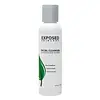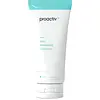What's inside
What's inside
 Key Ingredients
Key Ingredients

 Benefits
Benefits

 Concerns
Concerns

 Ingredients Side-by-side
Ingredients Side-by-side

Water
Skin ConditioningGlycerin
HumectantSalicylic Acid
MaskingCetearyl Alcohol
EmollientNeopentyl Glycol Diheptanoate
EmollientXanthan Gum
EmulsifyingParaffin
PerfumingGlyceryl Stearate
EmollientPEG-100 Stearate
Saxifraga Sarmentosa Extract
Skin ConditioningVitis Vinifera Fruit Extract
Skin ConditioningMorus Alba Bark Extract
Skin ConditioningScutellaria Baicalensis Root Extract
AstringentButylene Glycol
HumectantLinoleic Acid
CleansingLinolenic Acid
CleansingSodium Hyaluronate
HumectantDisodium EDTA
Glycolic Acid
BufferingPolysorbate 20
EmulsifyingSodium Hydroxide
BufferingCetyl Alcohol
EmollientIsododecane
EmollientPhenoxyethanol
PreservativeChlorphenesin
AntimicrobialBenzoic Acid
MaskingSorbic Acid
PreservativeParfum
MaskingWater, Glycerin, Salicylic Acid, Cetearyl Alcohol, Neopentyl Glycol Diheptanoate, Xanthan Gum, Paraffin, Glyceryl Stearate, PEG-100 Stearate, Saxifraga Sarmentosa Extract, Vitis Vinifera Fruit Extract, Morus Alba Bark Extract, Scutellaria Baicalensis Root Extract, Butylene Glycol, Linoleic Acid, Linolenic Acid, Sodium Hyaluronate, Disodium EDTA, Glycolic Acid, Polysorbate 20, Sodium Hydroxide, Cetyl Alcohol, Isododecane, Phenoxyethanol, Chlorphenesin, Benzoic Acid, Sorbic Acid, Parfum
 Reviews
Reviews

Ingredients Explained
These ingredients are found in both products.
Ingredients higher up in an ingredient list are typically present in a larger amount.
Disodium EDTA plays a role in making products more stable by aiding other preservatives.
It is a chelating agent, meaning it neutralizes metal ions that may be found in a product.
Disodium EDTA is a salt of edetic acid and is found to be safe in cosmetic ingredients.
Learn more about Disodium EDTAParfum is a catch-all term for an ingredient or more that is used to give a scent to products.
Also called "fragrance", this ingredient can be a blend of hundreds of chemicals or plant oils. This means every product with "fragrance" or "parfum" in the ingredients list is a different mixture.
For instance, Habanolide is a proprietary trade name for a specific aroma chemical. When used as a fragrance ingredient in cosmetics, most aroma chemicals fall under the broad labeling category of “FRAGRANCE” or “PARFUM” according to EU and US regulations.
The term 'parfum' or 'fragrance' is not regulated in many countries. In many cases, it is up to the brand to define this term.
For instance, many brands choose to label themselves as "fragrance-free" because they are not using synthetic fragrances. However, their products may still contain ingredients such as essential oils that are considered a fragrance by INCI standards.
One example is Calendula flower extract. Calendula is an essential oil that still imparts a scent or 'fragrance'.
Depending on the blend, the ingredients in the mixture can cause allergies and sensitivities on the skin. Some ingredients that are known EU allergens include linalool and citronellol.
Parfum can also be used to mask or cover an unpleasant scent.
The bottom line is: not all fragrances/parfum/ingredients are created equally. If you are worried about fragrances, we recommend taking a closer look at an ingredient. And of course, we always recommend speaking with a professional.
Learn more about ParfumPhenoxyethanol is a preservative that has germicide, antimicrobial, and aromatic properties. Studies show that phenoxyethanol can prevent microbial growth. By itself, it has a scent that is similar to that of a rose.
It's often used in formulations along with Caprylyl Glycol to preserve the shelf life of products.
Salicylic Acid (also known as beta hydroxy acid or BHA) is a well-known ingredient for treating skin that struggles with acne and clogged pores. It exfoliates both the skin's surface and deep within the pores to help clear out buildup, control oil, and reduce inflammation.
Unlike AHAs (alpha hydroxy acids), salicylic acid is oil-soluble. This allows it to penetrate into pores which makes it especially effective for treating blackheads and preventing future breakouts.
Salicylic acid is also known for its soothing properties. It has a similar structure to aspirin and can calm inflamed or irritated skin, making it a good option for acne-prone skin that is also sensitive.
Concentrations of 0.5-2% are recognized by the U.S. FDA as an over-the-counter topical acne product.
It can cause irritation and/or dryness if one's skin already has a compromised moisture barrier, so it's best to focus on repairing that before introducing this ingredient into your routine.
While salicylic acid does not increase sun sensitivity, it’s still important to wear sunscreen daily to protect your skin.
If you are looking for the ingredient called BHA or Butylated Hydroxyanisole, click here.
Learn more about Salicylic AcidWater. It's the most common cosmetic ingredient of all. You'll usually see it at the top of ingredient lists, meaning that it makes up the largest part of the product.
So why is it so popular? Water most often acts as a solvent - this means that it helps dissolve other ingredients into the formulation.
You'll also recognize water as that liquid we all need to stay alive. If you see this, drink a glass of water. Stay hydrated!
Learn more about Water